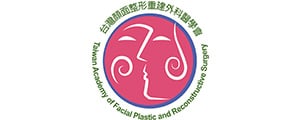Objectives: Revision rhinoplasty is a challenging operation in clinical practice. Materials for revision rhinoplasty could be artificial or autologous materials. Different materials used in revision cases are compared in results and complications.
Introduction: Revision rhinoplasty is one of the most challenging operation in facial-plastic surgery field. Remove previous artificial implant and grafted cartilage, reconstruct the nasal framework, meticulously deal with scar and soft tissue, and restore nasal function are complex and important.
Materials / method: Nasal deviation, short nose, and under-projected tip are common causes for patients seeking revision rhinoplasty. We use autologous costal cartilage for grafting material to rebuild the nose. In almost all cases, the nasal septal cartilage needs to be reconstructed due to previous surgery. Spreader graft and columellar strut are most common grafts used in revision rhinoplasty.
Results: Nasal deviation, short nose, and under-projected tip are common causes for patients seeking revision rhinoplasty. We use autologous costal cartilage for grafting material to rebuild the nose. In almost all cases, the nasal septal cartilage needs to be reconstructed due to previous surgery. Spreader graft and columellar strut are most common grafts used in revision rhinoplasty. Alar strut and tip grafts area also important for reshaping the tip.
Conclusion: Revision rhinoplasty often encounters the following problems: 1. weak and destructive septal cartilage, 2. lack of elasticity of nasal skin, 3. thinning of nasal tip skin, 4. fragile nasal mucosa, 5. scar tissue due to previous surgery. The characteristic of autologous costal cartilage is abundant in amount, excellent biocompatibility, and strong hardness. It is the golden choice of cartilage graft for structural reconstruction, and the long-term results are stable and reliable
Divulgação de informações
Você recebeu algum patrocínio para sua pesquisa neste tema?
Não
Você recebeu algum tipo de honorário, pagamento ou outra forma de compensação por seu trabalho neste estudo?
Não
Você possui relação financeira com alguma entidade que possa competir com os medicamentos, materiais ou instrumentos abordados no seu estudo?
Não
Você detém ou pediu a registro de patente para algum dos instrumentos, medicamentos ou materiais abordados no seu estudo?
Não
Este trabalho não recebeu nenhum patrocínio direto ou indireto. O mesmo está sob a própria responsabilidade do seu autor.















